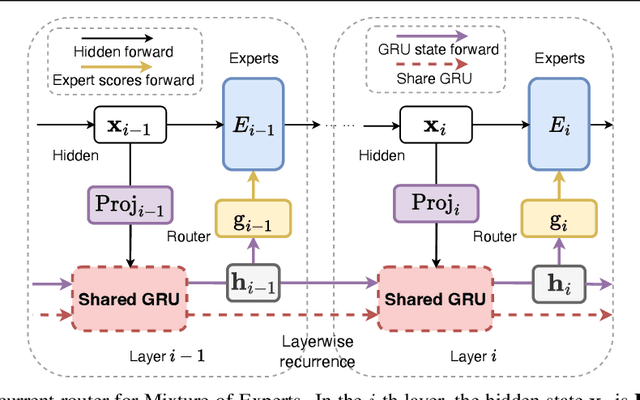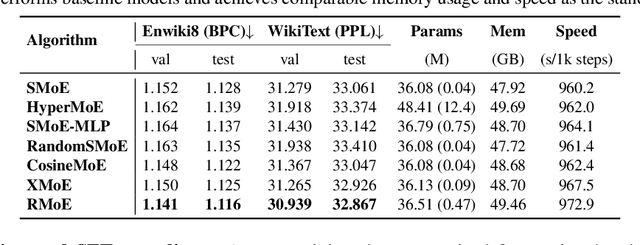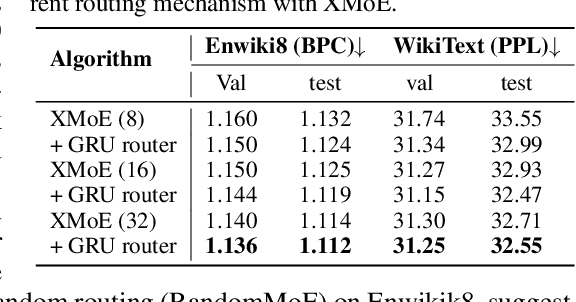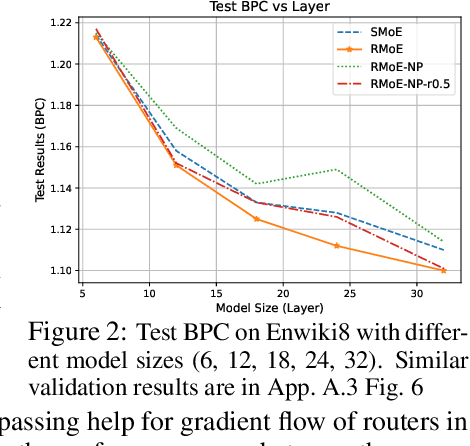Ivan Titov
Truthful or Fabricated? Using Causal Attribution to Mitigate Reward Hacking in Explanations
Apr 07, 2025Abstract:Chain-of-thought explanations are widely used to inspect the decision process of large language models (LLMs) and to evaluate the trustworthiness of model outputs, making them important for effective collaboration between LLMs and humans. We demonstrate that preference optimization - a key step in the alignment phase - can inadvertently reduce the faithfulness of these explanations. This occurs because the reward model (RM), which guides alignment, is tasked with optimizing both the expected quality of the response and the appropriateness of the explanations (e.g., minimizing bias or adhering to safety standards), creating potential conflicts. The RM lacks a mechanism to assess the consistency between the model's internal decision process and the generated explanation. Consequently, the LLM may engage in "reward hacking" by producing a final response that scores highly while giving an explanation tailored to maximize reward rather than accurately reflecting its reasoning. To address this issue, we propose enriching the RM's input with a causal attribution of the prediction, allowing the RM to detect discrepancies between the generated self-explanation and the model's decision process. In controlled settings, we show that this approach reduces the tendency of the LLM to generate misleading explanations.
Joint Localization and Activation Editing for Low-Resource Fine-Tuning
Feb 03, 2025Abstract:Parameter-efficient fine-tuning (PEFT) methods, such as LoRA, are commonly used to adapt LLMs. However, the effectiveness of standard PEFT methods is limited in low-resource scenarios with only a few hundred examples. Recent advances in interpretability research have inspired the emergence of activation editing techniques, which modify the activations of specific model components. These methods, due to their extremely small parameter counts, show promise for small datasets. However, their performance is highly dependent on identifying the correct modules to edit and often lacks stability across different datasets. In this paper, we propose Joint Localization and Activation Editing (JoLA), a method that jointly learns (1) which heads in the Transformer to edit (2) whether the intervention should be additive, multiplicative, or both and (3) the intervention parameters themselves - the vectors applied as additive offsets or multiplicative scalings to the head output. Through evaluations on three benchmarks spanning commonsense reasoning, natural language understanding, and natural language generation, we demonstrate that JoLA consistently outperforms existing methods.
Demons in the Detail: On Implementing Load Balancing Loss for Training Specialized Mixture-of-Expert Models
Jan 21, 2025Abstract:This paper revisits the implementation of $\textbf{L}$oad-$\textbf{b}$alancing $\textbf{L}$oss (LBL) when training Mixture-of-Experts (MoEs) models. Specifically, LBL for MoEs is defined as $N_E \sum_{i=1}^{N_E} f_i p_i$, where $N_E$ is the total number of experts, $f_i$ represents the frequency of expert $i$ being selected, and $p_i$ denotes the average gating score of the expert $i$. Existing MoE training frameworks usually employ the parallel training strategy so that $f_i$ and the LBL are calculated within a $\textbf{micro-batch}$ and then averaged across parallel groups. In essence, a micro-batch for training billion-scale LLMs normally contains very few sequences. So, the micro-batch LBL is almost at the sequence level, and the router is pushed to distribute the token evenly within each sequence. Under this strict constraint, even tokens from a domain-specific sequence ($\textit{e.g.}$, code) are uniformly routed to all experts, thereby inhibiting expert specialization. In this work, we propose calculating LBL using a $\textbf{global-batch}$ to loose this constraint. Because a global-batch contains much more diverse sequences than a micro-batch, which will encourage load balance at the corpus level. Specifically, we introduce an extra communication step to synchronize $f_i$ across micro-batches and then use it to calculate the LBL. Through experiments on training MoEs-based LLMs (up to $\textbf{42.8B}$ total parameters and $\textbf{400B}$ tokens), we surprisingly find that the global-batch LBL strategy yields excellent performance gains in both pre-training perplexity and downstream tasks. Our analysis reveals that the global-batch LBL also greatly improves the domain specialization of MoE experts.
Language Agents Meet Causality -- Bridging LLMs and Causal World Models
Oct 25, 2024Abstract:Large Language Models (LLMs) have recently shown great promise in planning and reasoning applications. These tasks demand robust systems, which arguably require a causal understanding of the environment. While LLMs can acquire and reflect common sense causal knowledge from their pretraining data, this information is often incomplete, incorrect, or inapplicable to a specific environment. In contrast, causal representation learning (CRL) focuses on identifying the underlying causal structure within a given environment. We propose a framework that integrates CRLs with LLMs to enable causally-aware reasoning and planning. This framework learns a causal world model, with causal variables linked to natural language expressions. This mapping provides LLMs with a flexible interface to process and generate descriptions of actions and states in text form. Effectively, the causal world model acts as a simulator that the LLM can query and interact with. We evaluate the framework on causal inference and planning tasks across temporal scales and environmental complexities. Our experiments demonstrate the effectiveness of the approach, with the causally-aware method outperforming LLM-based reasoners, especially for longer planning horizons.
What's New in My Data? Novelty Exploration via Contrastive Generation
Oct 18, 2024Abstract:Fine-tuning is widely used to adapt language models for specific goals, often leveraging real-world data such as patient records, customer-service interactions, or web content in languages not covered in pre-training. These datasets are typically massive, noisy, and often confidential, making their direct inspection challenging. However, understanding them is essential for guiding model deployment and informing decisions about data cleaning or suppressing any harmful behaviors learned during fine-tuning. In this study, we introduce the task of novelty discovery through generation, which aims to identify novel properties of a fine-tuning dataset by generating examples that illustrate these properties. Our approach, Contrastive Generative Exploration (CGE), assumes no direct access to the data but instead relies on a pre-trained model and the same model after fine-tuning. By contrasting the predictions of these two models, CGE can generate examples that highlight novel characteristics of the fine-tuning data. However, this simple approach may produce examples that are too similar to one another, failing to capture the full range of novel phenomena present in the dataset. We address this by introducing an iterative version of CGE, where the previously generated examples are used to update the pre-trained model, and this updated model is then contrasted with the fully fine-tuned model to generate the next example, promoting diversity in the generated outputs. Our experiments demonstrate the effectiveness of CGE in detecting novel content, such as toxic language, as well as new natural and programming languages. Furthermore, we show that CGE remains effective even when models are fine-tuned using differential privacy techniques.
Disentangling Textual and Acoustic Features of Neural Speech Representations
Oct 03, 2024



Abstract:Neural speech models build deeply entangled internal representations, which capture a variety of features (e.g., fundamental frequency, loudness, syntactic category, or semantic content of a word) in a distributed encoding. This complexity makes it difficult to track the extent to which such representations rely on textual and acoustic information, or to suppress the encoding of acoustic features that may pose privacy risks (e.g., gender or speaker identity) in critical, real-world applications. In this paper, we build upon the Information Bottleneck principle to propose a disentanglement framework that separates complex speech representations into two distinct components: one encoding content (i.e., what can be transcribed as text) and the other encoding acoustic features relevant to a given downstream task. We apply and evaluate our framework to emotion recognition and speaker identification downstream tasks, quantifying the contribution of textual and acoustic features at each model layer. Additionally, we explore the application of our disentanglement framework as an attribution method to identify the most salient speech frame representations from both the textual and acoustic perspectives.
Mitigating Copy Bias in In-Context Learning through Neuron Pruning
Oct 02, 2024Abstract:Large language models (LLMs) have demonstrated impressive few-shot in-context learning (ICL) abilities. Still, we show that they are sometimes prone to a `copying bias', where they copy answers from provided examples instead of learning the underlying patterns. In this work, we propose a novel and simple method to mitigate such copying bias. First, we create a synthetic task and use the Integrated Gradients method to identify neurons that prioritize copying over generalization. We demonstrate that pruning these neurons consistently improves performance across a diverse set of ICL tasks. We also show that our method is applicable across various LLM architectures, including Transformers and State-Space Models, without requiring modifications. In our analysis, we adopt a task-recognition perspective on ICL and examine task vectors (Hendel et al., 2023) induced by the model. We find that pruning enhances the quality of these vectors, suggesting that the pruned neurons previously hindered effective task recognition.
Post-hoc Reward Calibration: A Case Study on Length Bias
Sep 25, 2024



Abstract:Reinforcement Learning from Human Feedback aligns the outputs of Large Language Models with human values and preferences. Central to this process is the reward model (RM), which translates human feedback into training signals for optimising LLM behaviour. However, RMs can develop biases by exploiting spurious correlations in their training data, such as favouring outputs based on length or style rather than true quality. These biases can lead to incorrect output rankings, sub-optimal model evaluations, and the amplification of undesirable behaviours in LLMs alignment. This paper addresses the challenge of correcting such biases without additional data and training, introducing the concept of Post-hoc Reward Calibration. We first propose an intuitive approach to estimate the bias term and, thus, remove it to approximate the underlying true reward. We then extend the approach to a more general and robust form with the Locally Weighted Regression. Focusing on the prevalent length bias, we validate our proposed approaches across three experimental settings, demonstrating consistent improvements: (1) a 3.11 average performance gain across 33 reward models on the RewardBench dataset; (2) enhanced alignment of RM rankings with GPT-4 evaluations and human preferences based on the AlpacaEval benchmark; and (3) improved Length-Controlled win rate of the RLHF process in multiple LLM--RM combinations. Our method is computationally efficient and generalisable to other types of bias and RMs, offering a scalable and robust solution for mitigating biases in LLM alignment. Our code and results are available at https://github.com/ZeroYuHuang/Reward-Calibration.
Layerwise Recurrent Router for Mixture-of-Experts
Aug 13, 2024



Abstract:The scaling of large language models (LLMs) has revolutionized their capabilities in various tasks, yet this growth must be matched with efficient computational strategies. The Mixture-of-Experts (MoE) architecture stands out for its ability to scale model size without significantly increasing training costs. Despite their advantages, current MoE models often display parameter inefficiency. For instance, a pre-trained MoE-based LLM with 52 billion parameters might perform comparably to a standard model with 6.7 billion parameters. Being a crucial part of MoE, current routers in different layers independently assign tokens without leveraging historical routing information, potentially leading to suboptimal token-expert combinations and the parameter inefficiency problem. To alleviate this issue, we introduce the Layerwise Recurrent Router for Mixture-of-Experts (RMoE). RMoE leverages a Gated Recurrent Unit (GRU) to establish dependencies between routing decisions across consecutive layers. Such layerwise recurrence can be efficiently parallelly computed for input tokens and introduces negotiable costs. Our extensive empirical evaluations demonstrate that RMoE-based language models consistently outperform a spectrum of baseline models. Furthermore, RMoE integrates a novel computation stage orthogonal to existing methods, allowing seamless compatibility with other MoE architectures. Our analyses attribute RMoE's gains to its effective cross-layer information sharing, which also improves expert selection and diversity. Our code is at https://github.com/qiuzh20/RMoE
Generalisation First, Memorisation Second? Memorisation Localisation for Natural Language Classification Tasks
Aug 09, 2024Abstract:Memorisation is a natural part of learning from real-world data: neural models pick up on atypical input-output combinations and store those training examples in their parameter space. That this happens is well-known, but how and where are questions that remain largely unanswered. Given a multi-layered neural model, where does memorisation occur in the millions of parameters? Related work reports conflicting findings: a dominant hypothesis based on image classification is that lower layers learn generalisable features and that deeper layers specialise and memorise. Work from NLP suggests this does not apply to language models, but has been mainly focused on memorisation of facts. We expand the scope of the localisation question to 12 natural language classification tasks and apply 4 memorisation localisation techniques. Our results indicate that memorisation is a gradual process rather than a localised one, establish that memorisation is task-dependent, and give nuance to the generalisation first, memorisation second hypothesis.
 Add to Chrome
Add to Chrome Add to Firefox
Add to Firefox Add to Edge
Add to Edge